#dancehall Type Beat
Text
youtube
#dancehall Type Beat#dancehall riddim#dancehall beat#afro dancehall#dancehall instrumental#danoisebeats#Youtube
1 note
·
View note
Video
youtube
~ LSL Prod - Liliyana (2022) ~
(instrumental Written & Produced by Lord SaintLanne)
Picture: Lucky 13 Sugar Skull.
#LSLprod#reggaeton#type beats#type beat#reggaeton type beat ✘ dancehall instrumental afrobeat instrumental 2022#reggaeton type beats instrumental
3 notes
·
View notes
Text
1 note
·
View note
Text
youtube
#instrumental#beat instrumental#rap beat instrumental#type beat#type instrumental#pop instrumental#trap beat#Vanilda music#Rihanna type beat#Rihanna instrumental#Tory Lanez type beat#Tory Lanez instrumental#Farrukot type beat#dancehall instrumental#rihanna dancehall Instrumental#tory lanez dancehall beat#dancehall beat#rihanna dancehall beat#tory lanez beat with hook#dancehall beat with hook#chill latin beat with hook#farruko beat with hook#with hook#Youtube
0 notes
Text
youtube
#balkan type beat#dancehall reggaeton type beat#reggaeton dancehall instrumental#balkan type beat 2022#balkan type beat 2021#oriental type beat#latin music#latin guitar type beat#bass boosted#magviewinfokyabaatsir#latin DJ#Electronic sound effects#Chill-out music#Base Boosted Bunce Party Mix#Night Club Music#Instrumental Music#magviewinfoshare#Electro Dance Music#djmusic#Party music#music beats#djjishu#car music#Top Disco music#dance beats#magviewinfo#Youtube
0 notes
Text


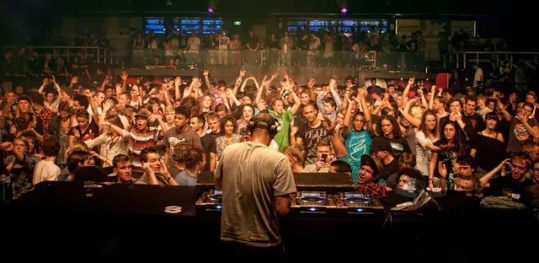
In Jamaican dancehall music, a riddim is the instrumental accompaniment to a song and is synonymous with the rhythm section. Jamaican music genres that use the term consist of the riddim plus the voicing (vocal part) sung by the deejay. A given riddim, if popular, may be used in dozens—or even hundreds—of songs, not only in recordings but also in live performances.
Since the 1970s, riddims have accompanied reggae music and through the 1980s, more widely known as dancehall. As seen in dancehall music, there is a voicing part – sung by the DJ – over some riddim that has probably been widely used in many other songs. There is a unique establishment in the combination of riddims and voicing.
By 1993, Jamaica finally established a copyright act, but producers still face difficulty in establishing profit. Through proper registration, many artists now work on negotiating their royalties and taking it more seriously. The unique nature of dancehall and riddims have been highly influential on the numerous remixes that now circulate throughout R&B and hip-hop music.
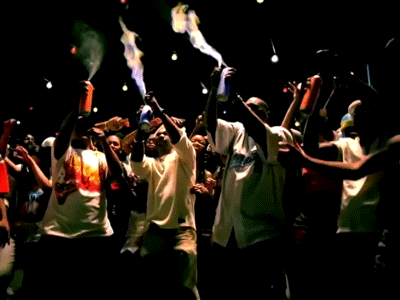
Some classic riddims, such as "Nanny Goat" and "Real Rock" both produced by Clement "Coxsone" Dodd, are essentially the accompaniment tracks of the original 1960s reggae songs with those names. Since the 1980s, however, riddims started to be originally composed by producers/beatmakers, who give the riddims original names and, typically, contract artists to voice over them. Thus, for example, "Diwali" is the name not of a song, but of a riddim created by Steven "Lenky" Marsden, subsequently used as the basis for several songs, such as Sean Paul's "Get Busy" and Bounty Killer's "Sufferer."
"Riddims are the primary musical building blocks of Jamaican popular songs.... At any given time, ten to fifteen riddims are widely used in dancehall recordings, but only two or three of these are the now ting (i.e., the latest riddims that everyone must record over if they want to get them played in the dance or on radio).... In dancehall performing, those whose timing is right on top of the rhythm are said to be riding di riddim.
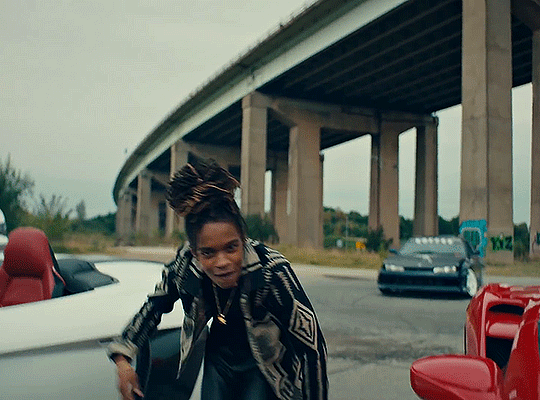
The bass culture of Jamaican sonic sensibilities is characterized with less emphasis on melody and large emphasis on the drum beats and low frequency bass vibrations to draw attention to the social grounding to the culture. These aspects of Jamaican music are expressed visually through the Dancehall choreography and its African inspired folk traditions, which emphasize earthly connection through flat-footed stamping and “bumper-grinding sexually explicit choreography, where the bass note is struck by the body itself—displaying its fecundity and celebrating its fertility”. This bass culture is also embodied sonically by the music's heartbeat, the bass lines often described as riddims, produced in the late 1960s and early 1970s. These riddims offer a sonic foundation on top of which different other sounds are incorporated to form innumerable versions.
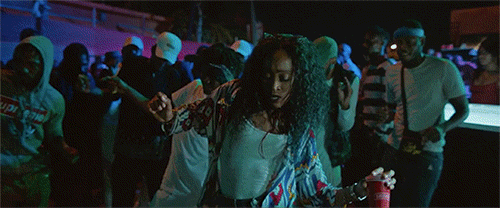
African in origin (see clave (rhythm) and bell pattern), riddims can generally be categorized into three types. One of the oldest types of riddim is the classical riddim providing roots reggae, dub, and lovers rock with instrumentals, such as Bam Bam, produced by Sly & Robbie. The second type is the ragga riddim backing raggamuffin and dancehall songs, such as the Juice riddim, produced by Richard "Shams" Browne. The third type is the digital riddim, such as Sleng Teng, Punaany Riddim & Duck Riddim produced by King Jammy.
A number of riddims take their name and influence from African-Jamaican religious drumming such as the Kumina riddim, created in 2002 by Sly and Robbie, and Burru.

#african#afrakan#kemetic dreams#africans#brown skin#brownskin#afrakans#african culture#afrakan spirituality#african music#riddim#burru#african jamaican#jamaican#jamaica#jamaican music#rastafari#rasta#rastaman#rasta love#dancing rasta
18 notes
·
View notes
Note
Do you think the EC boys are listening to music during sex?
If yes, what are they listening to? 🎶
Ok so i had typed a big ass thing and tumblr decided to erase the whole thing im so mad.
Also tumblr has apparently a max of music so i can only tell which song sorry :(
Kevin — yes
He has a playlist and it’s not on random. Every song has it’s place for the mood.
Joi — lick
Childish gambino — redbone
David — yes
He’s takijg such good care of himself i refuse to believe he wouldn’t put that much care in bed — including music. He’ll want to show off he’s a drummer, he has stamina, and he can follow a beat. Good luck.
Zomboy — lonewolf
Daniel — yes
Listen here, homeboy is a leo with a scorpio moon and a libra venus. He’s a romantic, he loves love. He seeks sensual partners. He’s gonna do everything to make it perfect and that includes music. And no, i dont care its a basic choice.
The arctic monkeys — do i wanna know?
Pascal — no
Pascal is our awkward emo twink and i think he’s still like that a decade later. The only background music is the anime you forgot playing in the background while making out.
Cowboy bebop — tank!
Dan — no
I might be biased but… Dan doesn’t need that to set the mood. If there’s any music, it’s the radio playing rock music in the car.
Halestorm — i get off
Nico — yes
Nico is a 90s kid. So yes. I don’t know for Europe, but our generation here had a lot of dancehall influences. I think he’ll put some to create a slow and nice mood.
Sean Paul — I’m still in love with you boy
#electric callboy#ask#kevin ratajczak#daniel haniß#daniel klossek#nico sallach#david friedrich#pascal schillo
5 notes
·
View notes
Text

LIST
YOU SUCKAS: THE 25 DOPEST KRS-ONE SONGS
By Kiani Shabazz
Published Sat, August 28, 2021 at 6:00 PM EDT
Lawrence “Kris” Parker, better known as KRS-One, is one of the most groundbreaking emcees in Hip-Hop history.
Known for his politically-charged raps, brash delivery, and ethos of promoting Afrocentrism and knowledge, KRS-One is one of the godfathers of political or conscious rap, but his influence doesn't stop there. KRS always incorporates patois and Jamaican toasting in his flow, connecting dancehall and Hip-Hop for anyone who may have forgotten how much the Caribbean helped forge this culture. And on Boogie Down Productions' classic debut Criminal Minded, his gritty street tales helped set the mold for what would later be called gangsta rap.
His name is an abbreviation for Knowledge Reigns Supreme Over Nearly Everyone, and "The Teacha" never falls short of delivering a thought-provoking message with his gift of lyrical storytelling. KRS has a long catalog of tracks from his days with Boogie Down Productions and his solo career. Here are KRS-One’s 25 Dopest Songs.
#26
“MAD IZM” - CHANNEL LIVE FEAT. KRS-ONE [BONUS SONG]
Our BONUS SONG pick is a celebrated classic guest spot! KRS links up with New Jersey duo Channel Live over a hypnotizing loop as the emcees spit lyrics about smoking the finest tree.
#25
“HIP-HOP VS. RAP”
On this track KRS maps out the differences between hip-hop and rap. “Rap is something you do, hip-hop is something you live,” the emcee explains. Kris shouts out a dozen or so other classic rap tracks on the song, which was a freestyle originally released as the B-side of 1994s "Sound Of Da Police."
#24
"AH YEAH"
One of the most incendiary tracks in a catalog that's about as unapologetic as it gets, KRS delivers this firebomb on his classic sophomore solo album, calling out white supremacy and racism on one of his most bombastic anthems.
#23
"A FRIEND"
KRS-One reflects on the qualities that people have to have in order for them to kick it with him. In true KRS fashion, the rapper has to drop some conscious bars about trustworthiness, hip-hop culture, and respect on the track about friendship and camaraderie.
DROP YOUR EMAIL
TO STAY IN THE KNOW
SUBMIT
#22
"FREE MUMIA"
While the track is dedicated to Mumia Abu-Jamal, a political prisoner, little is mentioned about him. It can be said that KRS-One used Mumia as a comparison: Mumia was arrested and convicted for political reasons, just like Hip-Hop was under trail and used as a scapegoat for political gain.
#21
"DUCK DOWN" - BOOGIE DOWN PRODUCTIONS
One of KRS-One’s hardest tracks. Over a banging drum beat, KRS delivers another clear message to sucka emcees about who exactly holds the crown in Hip Hop. With a hard hitting breakbeat and horror movie type sample, this track is nothing short of a banger.
#20
"BLACK COP"
The version of “Black Cop” that appeared on "Return of the Boom Bap" was a remix produced by Kenny Parker and KRS-One. The original record, produced by Pal Joey, was scrapped. In fact, its first release on the "CB4" soundtrack lists Pal Joey as the producer and its rerelease on the "Return of the Boom Bap" lists KRS-One, clearly revealing that a mix up had occurred.
#19
“JIMMY” - BOOGIE DOWN PRODUCTIONS
KRS-One gives us a safe-sex anthem with “Jimmy.” At the height of the AIDs epidemic, Teacha reminds all the “super hoes” to wrap it up before laying it down in the bedroom. The song is informative yet playful, the hook later being interpolated for Diddy and Pharell's 2001 collaboration “Diddy."
#18
"I CAN'T WAKE UP"
One of DJ Premier's most raucous beats is the backdrop for KRS to get off-the-wall; recounting a dream of being a blunt—that's getting passed among everybody in Hip-Hop, from Redman to Greg Nice to Yo-Yo.
#17
"POETRY" - BOOGIE DOWN PRODUCTIONS
The opening track to the classic Criminal Minded sets the tone for the rest of the album: hard, minimalistic beats and KRS’ intelligent lyricism. Revolutionary and hugely influential, Hip Hop in its purest form.
#16
"RAPPAZ R N DANJA"
This DJ Premier-produced banger is the perfect opener to KRS One’s underappreciated eponymous titled second solo album. KRS has a message for wack rappers – guess what: they are in danger.
#15
"CRIMINAL MINDED" - BOOGIE DOWN PRODUCTIONS
The title track to Boogie Down Production’s 1987 album is the perfect introduction to KRS-One’s conscious rap style. The rapper was unmatched in his era. KRS flows effortlessly on the hard hitting beat as Scott La- Rock chops and scratches throughout the track. The perfect introduction to one of the best emcee’s of all time.
#14
"YOU MUST LEARN" - BOOGIE DOWN PRODUCTIONS
KRS-One addresses the American public school system and its obsession with teaching black kids nothing but ‘white history’. In this song the rapper takes it upon himself to teach his listeners the importance of African American history, name-dropping black history icons like Benjamin Banneker, Garrett Morgan, and Harriet Tubman. He makes it clear that young blacks should educate themselves on their history. They must learn!
#13
"WHY IS THAT?" - BOOGIE DOWN PRODUCTIONS
Much like "Black Man In Effect" from "Edutainment," this song is signature KRS One. Thought-provoking, provocative, filled with knowledge and ultimately uplifting; this is one of the highlights of Boogie Down Productions’ "Ghetto Music: The Blueprint Of Hip-Hop."
#12
“STOP THE VIOLENCE” - BOOGIE DOWN PRODUCTIONS
The song that kicked off the rapper’s Stop the Violence campaign, promoting peace and harmony in the hip-hop community. The campaign was kicked off after a fan was shot and killed outside of a Boogie Down Productions and Public Enemy show. The track encourages listeners to change the narrative of hip-hop and street culture by putting an end to the violence, staying true to KRS-One’s ethos of positivity and black empowerment.
#11
“9MM GOES BANG” - BOOGIE DOWN PRODUCTIONS
On this track, Blastmaster KRS tells us a story about his trusty 9mm pistol. Evidence of early KRS-One (before he fully adopted his "Teacha" persona), this Kris is not the one to fuck with. With some attempted robberies and beef over somebody’s girl KRS always keeps his gun on his side, always ready for the smoke. A prime example of how BDP helped lay the groundwork for gangsta rap, before the tragic murder of Scott La Rock set KRS on a more conscious path.
#10
"SELF DESTRUCTION" (STOP THE VIOLENCE MOVEMENT)
“Self-Destruction” was released as a charity single for the National Urban Legue, a New York City civil rights organization that is dedicated to fighting racial discrimination. The song was made after several shootings in New York City’s Hip-Hop scene, including the one that killed his friend and Boogie Down Productions founder, Scott La Rock.
#9
"OUTTA HERE"
KRS-One calls out all sucka MCs on the predecessor to his 1995 track, “Rappaz R N Danja”. The track warns one-hit wonder rappers and wack rappers to keep their eye on the clock because the time will come when they will be “Outta Here”.
#8
"LOVE’S GONNA GETCHA (MATERIAL LOVE)" - BOOGIE DOWN PRODUCTIONS
The 8th track off of "Edutainment" released in 1990, this single was produced by Pal Joey, and features a music Video. Here KRS-One teaches us the dangers of materialism and falling in love with items and flashy things and value these items more than life itself.
#7
"I’M STILL #1" - BOOGIE DOWN PRODUCTIONS
One of the stand-out tracks from the overall excellent By All Means Necessary album. As early as 1988 KRS proclaims with confidence he is still the GOAT and will still be always be. Thirty years later, not many have came to prove him wrong.
#6
"THE BRIDGE IS OVER" - BOOGIE DOWN PRODUCTIONS
This single is one of the most iconic diss records of all time. A continuation of their song “South Bronx”, going even harder on the Juice Crew’s MC Shan, Marley Marl, Mr. Magic and Roxanne Shante.
#5
"STEP INTO A WORLD (RAPTURE'S DELIGHT)"
This track is simply a banger! Taking a sample from Blondie’s, “Rapture”, on of the first songs that made hip-hop pop, was an anthem dedicated to the real emcees and hip-hop heads. KRS-One raps over one of the hardest beats in his career that is sure to get the club rockin.'
#4
"MC’S ACT LIKE THEY DON’T KNOW"
KRS- One and DJ Premier team up on the classic track “MC’s Act Like They Don’t Know” to once again let listeners and rappers know who is at the top of the game. Not only is KRS the best battle rapper with the sharpest pen, he also rocks the crowd better than every emcee too. There’s no question that KRS-One is one of the most energetic rappers to blaze the stage. He is engaging and ruthless on the mic.
#3
"SOUND OF DA POLICE"
Unfortunately, this track is just as relevant today as it was the day of the release decades ago. In this song KRS One addresses police brutality toward the black community, linking the days of slavery to the way police acts in these modern times. Comparing overseers to police officers, everyone should be scared of the sounds of the police.
#2
"SOUTH BRONX"
In response to MC Shan’s “The Bridge”, KRS-One comes answers back with “South Bronx”, proving that hip-hop’s birthplace was still not to be fucked with! The iconic diss track is a staple of hip-hop history, officially firing back to Queensbridge rap group, The Juice Crew, kicking off the infamous Bridge Wars.
#1
"MY PHILOSOPHY"
KRS-One addresses the commercialization of hip-hop. He notices that the genre he grew up loving has become a marketing ploy and is losing the raw and genuine essence of hip-hop music. The song was ahead of its time, almost 30 years later the song is more relevant than ever.
Sent from my iPhone
#hip hop 50#today in hip hop history#todayinhiphophistory#hiphop#hip-hop#hip hop#hip hop music#hip hop history#hip hop culture#music#history#music history#television#rap#rapper#emcee#mc
3 notes
·
View notes
Text
i don’t do this much often but i just wanna write my opinion on tnc: temptation as a moa that also listen to many songs of differing genres (and also has been straying away from kpop/stan community—i may say that i have a pretty clear helicopter view). if i don’t write this, i would not live w/ myself, yet in the end it is my opinion so…
a honest review of tnc: tempation purely from musical observation (not proofread)
1. devil by the window: when this song was first announced w/o hearing any snippets of it until the release, i predict it’ll sound towards dark fantasy-esque genre, ethereal sounding like bts’ jimin’s “lie” or dpr ian’s “1 shot”. but it is dark fantasy-esque but more towards “cysm” kinda macabre type. i can see this playing in the wednesday netflix show.
but, the autotune makes the voice fuzzy in a way that it made my head a tad bit hurt. i think the sound engineer pushes the voice near the lower eq that it sounds as if its drowning in the instrumental and almost having its breath all taken out + the autotune is not great that i cannot make out taehyun’s voice from the song (why can’t i find my boy?!). i can hear some inspiration from billie eilish’s “bad guy” and “bury a friend” and w/ the peter pan concept, definitely make peter pan more like a creep. it’s also an all english song and i have a bad sentiment w/ kpop group singing all english song but that’s just my preference
2. sugar rush ride: the guitar sample is very nice, giving a funky taste to it. mid-verse parts w/ the voice sample before each pre-choruses are also very nice, probably my favorite parts of the whole song.
ngl, i think the producers has an epiphany w/ enhypen title tracks and realize that txt should do the same thing which is “making a title track without a bridge”. the format is literally verse > mid-verse > pre-chorus > chorus > post-chorus > verse > mid-verse > pre-chrous > chrous > post-chorus > outro. the idea of “sugar rush ride” doesn’t get elevated in the end and that is probably the reason why i think the song is “empty” instrumentally and the anti-drop in the chorus part doesn’t help. the song, imo, could be better w/ more instrumental tracks added at the end as if the song is stacking up to the climax that is the last chorus and outro. if “sugar rush ride” was a roller coaster, it wouldn’t feel thrilling for every1 who ride it
3. happy fools: the intro with the bossa nova melody and double bass sound makes me think it is a bossa nova sounding song but when the 808 drum beat starting, it becomes a hip-hop song that gen z likes to hear and in my opinion, a very common one that it doesn’t stand out as a txt track. it also has some salem ilese’s “ps5” coding to it. i think this song will blow up in tiktok as a background sound for a diy tutorial arts and craft type of stuff cuz it is artsy in a way. i’m also more convince it is made for tiktok because of its 2:35 length which very short and it cuts very abruptly at the end. i don’t like songs that are cater to tiktok even though it is the best way for them to market the album and this song has a whole “this song is made to be a tiktok sound that would go viral” all over it
4. tinnitus: this song definitely has a more tropical sound to it and it combine with the dancehall beat makes it feel that it is made to be danced by the ocean. the song is also stagnant as if it supposed to be a bgm for a video game that is supposed to be repeated. though the song fades unlike happy fools, the fading sound cuts to quickly that it is so abrupt i can’t even catch a breath fast enough. a short review for a short song…
5. farewell, neverland: when i hear the guitar intro, i already guess it’s gonna be great song. i imagine it like they’re going to tell a story by a campfire on the neverland sands as a farewell for them to go home. a good track to end the album! and even though it doesn’t have a bridge (cuz it’s 3 mins long aka i want more), the song has a clear arc on how it will be sing/presented especially with the closing that we met the guitar again. kinda like the hero’s journey but a small one, a current summary for the bigger hero’s journey txt has done in this album and the lore of it. though i haven’t read the lyrics, i could guess it’ll also be as beautiful as the melody, harmony, n rhythm of the song…
final ranking:
5. happy fools
4. devil by the window
3. tinnitus
2. sugar rush ride (the mid-verse part is very memorable that it pushes the song up the rank)
1. farewell, neverland (a clear no. 1 in my heart and soul)
closing remarks: why is the album so short? why are the songs not even pass a 3’ 30” mark? why are you making songs w/o bridge bighit n by proxy hybe? the problem w/ autotune is still there especially in devil, probably in the mid to low tier rank of txt’s discography but for album visual concept, it’ll be at the top along with tcc: fight or escape n tdc: magic
8 notes
·
View notes
Text
[Free] - Alkaline Free Type Beat "Sunny" | Dancehall Beat by Shadoo One. @alkaline @shadooonemusic
#freebeat#freebeats#freetypebeat#freebeatforprofituse#freebeatsinstrumental#royaltyfreemusic#alkaline#alkalinetypebeat#dancehall#dancehallbeat#jamaica#music#radio#beatmaker#composer#musicproducer#rapper#singer#artist#entrepreneur#business#share#support#follow
2 notes
·
View notes
Video
youtube
~ LSL Prod - Shaolin Mantis (2022)
(instrumental Written & Produced by Lord SaintLanne)
Picture: "Shaolin Mantis" by Liu Chia-liang.
#shaolin#mantis#shaolinmantis#music#instrumental#trap#reggae#dancehall#typebeat#type beat#typebeats#type beats#electro#electronic#electro reggae#electro dancehall#digital reggae#digital dancehall#electro reggae type beat#electro dancehall type beat#digital reggae type beat#digital dancehall type beat#shabba ranks type beat#gregory isaacs type beat#gussie clarke type beat
2 notes
·
View notes
Text
1 note
·
View note
Text
youtube
#instrumental#beat instrumental#trap beat instrumental#rap beat instrumental#type beat#type instrumental#pop instrumental#trap beat#Vanilda music#trap instrumental#Rihanna type beat#Rihanna instrumental#Rihanna beats#Tory Lanez type beat#Tory Lanez instrumental#Tory Lanez beats#Farrukot type beat#Farruko type beats#Farruko beats#dancehall instrumental#rihanna dancehall Instrumental#tory lanez dancehall beat#dancehall beat#rihanna dancehall beat#beats#Youtube
0 notes
Audio
Listen/purchase: Lovely dancehall beat/ instrumental Bujubanton, Popcorn, Sean paul type by Lovely music
2 notes
·
View notes
Text
Da’Ville Gives us “Only You” on the Bankx Riddim
Jamaican reggae crooner, Orville “Da’Ville” Thomas, has thrilled us over the years with love songs that have lived on in us ever since. “Only You” is no different except for the beat, an old-school type of dancehall rhythm given an unexpected perspective with Da’Ville’s silky vocals.
“Only You” is the latest addition to the Bankx Riddim, produced by fashion designer, actress and author turned…

View On WordPress
0 notes
Text
Trap Music: Decoding the Intensity of Trap Music Beats
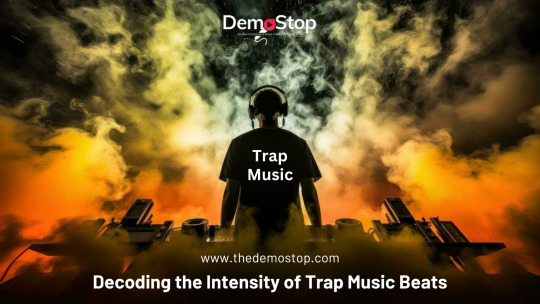
Few genres have had such a significant effect on modern music as trap music. This guide expands on the fundamentals of trap music by defining trap characteristics, explaining the complexities of creating your own trap masterpiece, exploring the top trap hits that have dominated music charts, and highlighting the masterminds behind them - trap artists who have etched their names into the genre's history. Join us as we trace the growth of trap music, from its humble beginnings to the vast stages of the most prestigious festivals, which reverberate with throbbing beats.
Trap Music Meaning
Trap music meaning is a genre that began in the late 1990s in the Southern United States, specifically Atlanta. Trap rhythms are aggressive with powerful bass and sometimes include quick hi-hats and synths. OutKast and Underground Kingz (UGK) were among the pioneers of trap music.
Trap music consists of more than simply rhythms and lyrics. A "trap" refers to famed drug-dealing locations, and trap songs frequently address themes of street life, hustling, and overcoming obstacles. Trap house music has grown to become a popular subgenre of hip-hop, influencing a diverse spectrum of artists and genres in the music business.
Types of trap music
Atlanta trap
Developed in Atlanta, Georgia, in the 1990s.
Characteristics: Heavy bass and forceful rhythms.
Gritty lyrics reflect urban existence.
Features distinct hi-hats and 808 drum rhythms.
Pioneering musicians include OutKast, T.I., and Gucci Mane.
Tropical trap
Tropical trap music, with Calypso beats and synth pop components, originated in the Caribbean and acquired global prominence.
Characteristics include danceable beats with a sunny mood.
A mix of trap, reggae, dancehall, and tropical house.
Tropical trap music has a global appeal that goes beyond typical hip-hop listeners.
SoundCloud trap
The subgenre originated on the SoundCloud platform in the late 2000s and early 2010.
Characteristics include DIY ethos and experimental creation. Unusual sound and sampling.
Features unusual production techniques and a lo-fi style.
SoundCloud has become a valuable platform for indie artists to display their work.
Trap soul
Popularized in the 2010s, this subgenre combines trap and modern R&B components.
Characteristics: o Soulful vocals with trap-influenced production.
Themes explored include love, relationships, and personal challenges.
The words are introspective and emotionally resonant.
Bryson Tiller, a key artist, contributed significantly to the growth of trap soul.
Influence of trap music on pop culture
Trap music has had a lasting impression on mainstream culture, transcending its roots in the Southern United States to become a global phenomenon. Trap music has had a significant impact on many aspects of current society. The trap's powerful basslines, prominent hi-hats, and forceful beats have influenced hip-hop, pop, and electronic music.
The genre's ascent in popularity on music charts, as well as collaborations between trap musicians and pop legends, have blurred genre lines, resulting in music that appeals to a worldwide audience. Trap culture has expanded to fashion, with trap music musicians frequently becoming style inspirations. Trap's image, which combines streetwear and high fashion, is becoming increasingly popular.
How to write a trap song?
The following is a step-by-step guide to compose a trap song:
Lay down your tempo: To achieve the unique trap vibe, choose a moderate to slow speed, usually between 70 and 110 BPM.
Set your beat: Create a crisp, punchy drumming centered on the kick, snare, and hi-hats. Experiment with patterns until you discover a rhythm that matches your style.
Create and then repeat your melody: Create a catchy and memorable song with synths or other instruments. Repetition is essential in trap music, so consider constructing a repeated verse to anchor your song.
Add drums: Improve your rhythm by combining 808 drum patterns. The bassline should be deep and resonant, giving a sturdy basis for the track.
Adjust your snare: Fine-tune the snare to get the desired result. Trap music frequently includes quick and complicated snare rolls, so experiment with different patterns to create intensity and dynamics.
Use distortion: Use distortion on specific parts, particularly 808 basses, to produce a gritty and abrasive sound. This imparts a raw and strong feel to the entire sound.
Conclusion
In conclusion, trap music has become a significant and influential part of contemporary music culture, with its distinct sound and themes resonating with audiences worldwide. Its impact can be felt not only within hip hop but also across a range of musical genres and cultural contexts.
0 notes